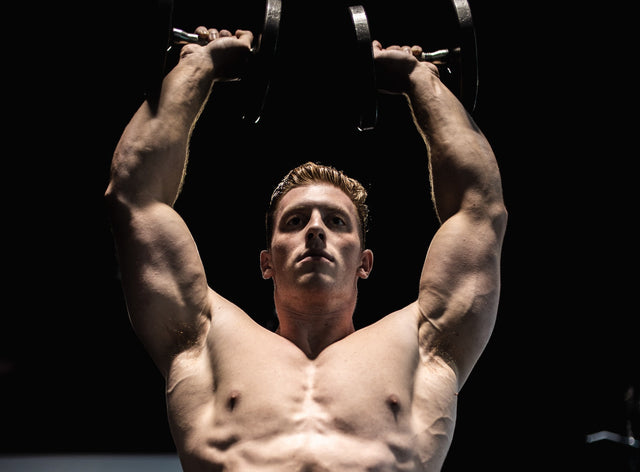In the world of sports and bodybuilding, few compounds are as controversial as clostebol. Often shrouded in secrecy, this anabolic steroid has sparked heated debates over its benefits and risks. Athletes and fitness enthusiasts alike are drawn to clostebol’s reputation for enhancing performance and promoting muscle growth, but at what cost? The allure of quicker results can cloud judgment, leading many to overlook the potential health implications and legal ramifications. As we delve deeper into the complexities surrounding clostebol, we’ll uncover the science behind its effectiveness, the risks that users face, and the controversies that have surrounded its use in competitive sports.
Whether you’re an athlete considering its use, a coach seeking to guide your team ethically, or simply curious about its effects, this comprehensive exploration promises to provide valuable insights into clostebol’s hidden truths. Join us as we unlock the benefits of clostebol and navigate the intricate landscape where benefits meet serious considerations.
The History of Clostebol: Origins and Development
Origins of Clostebol
Clostebol is a synthetic anabolic steroid derived from testosterone that was first developed in the mid-20th century to provide anabolic benefits with fewer androgenic side effects. It was structurally altered by adding a chlorine atom at the 4-position, which inhibits aromatization, making clostebol less likely to convert into estrogen—one of its most appealing features for medical and athletic use.
The compound was first synthesized and marketed by Jenapharm, a German pharmaceutical company, under brand names such as Steranabol and Megagrisevit (Franke & Berendonk, Clinical Chemistry, 1997).
Rise in Athletic Use
During the 1960s and 1970s, clostebol gained popularity among athletes and bodybuilders due to its mild androgenic and moderate anabolic properties. Its limited side effects made it especially attractive to female athletes seeking performance enhancement without severe virilization.
At that time, anti-doping measures were still in their infancy, and anabolic steroid use was widespread among elite competitors (Yesalis & Bahrke, JAMA, 2000).
Regulation and Doping Scandals
In the 1980s, as anabolic steroid abuse grew, organizations like the International Olympic Committee (IOC) and World Anti-Doping Agency (WADA) began placing clostebol on their banned substance lists. Despite stricter regulation, clostebol has remained at the center of several doping controversies—even in recent years—due to its presence in over-the-counter creams and ointments, which can lead to accidental positives.
Clostebol remains banned under WADA's prohibited list as a Category S1 anabolic agent (WADA, 2024 Prohibited List).
Benefits of Clostebol for Athletes and Bodybuilders
Promotes Lean Muscle Mass and Recovery
Clostebol stimulates protein synthesis, enhancing muscle recovery and growth after resistance training. This makes it ideal for athletes in hypertrophy or strength phases who want to build lean muscle with fewer androgenic effects.
Research shows that chlorinated derivatives like clostebol stimulate anabolic activity with reduced estrogenic conversion (Kicman, British Journal of Pharmacology, 2008).
Mild Androgenic Effects
Compared to compounds like trenbolone or testosterone enanthate, clostebol has lower androgenic potency, which reduces risks of hair loss, acne, or voice deepening—especially in women and sensitive individuals.
This makes it a preferred compound for females and entry-level users seeking anabolic effects with minimized side effects.
Improved Red Blood Cell Production
Clostebol may also increase erythropoietin (EPO) production, which boosts red blood cell count. This improves oxygen delivery to muscles, enhancing endurance, stamina, and recovery during aerobic exercise.
An increase in erythropoiesis has been associated with improved VO₂ max and performance (Lombardi et al., Journal of Endocrinological Investigation, 2007).
The Mechanism of Action: How Clostebol Works
Androgen Receptor Activation
Clostebol works by binding to androgen receptors in muscle cells, initiating gene transcription that promotes protein synthesis and muscle fiber repair. This cascade leads to improved muscle mass, strength, and overall performance.
Positive Nitrogen Balance
It also promotes nitrogen retention, a critical marker of anabolism. A positive nitrogen balance means the body retains more protein than it breaks down, fueling muscle growth and recovery.
Maintaining positive nitrogen balance is essential for hypertrophy and tissue repair (Hoffman & Ratamess, Strength and Conditioning Journal, 2006).
Boosts Oxygenation and Endurance
By stimulating erythropoietin, clostebol enhances oxygen-carrying capacity, delaying fatigue and improving aerobic output during prolonged exercise.
This makes it particularly useful for endurance athletes such as cyclists, rowers, and long-distance runners.
Risks and Side Effects Associated with Clostebol Use
Hepatotoxicity (Liver Stress)
As an oral compound, clostebol is hepatotoxic. The liver metabolizes it into compounds that may impair liver function over time, especially at high doses or prolonged cycles.
Elevated liver enzymes and hepatotoxicity are common in C-17α-alkylated steroids (Bhasin et al., NEJM, 1996).
Hormonal Suppression and Virilization
-
In males, clostebol can suppress endogenous testosterone production, potentially leading to hypogonadism, fatigue, and libido issues.
-
In females, side effects include deepened voice, facial hair, and menstrual irregularities due to virilization.
These effects may persist after discontinuation, particularly with extended or high-dose usage (Evans, Clin Endocrinol (Oxf), 2004).
Cardiovascular Impact
Clostebol may alter lipid profiles by:
-
Lowering HDL (good cholesterol)
-
Raising LDL (bad cholesterol)
This increases the risk of atherosclerosis, hypertension, and cardiovascular disease.
Anabolic steroid use has been associated with structural changes in heart tissue and arterial stiffness (Sader et al., Medical Science Sports Exercise, 2001).
Other Common Side Effects
-
Acne
-
Hair loss (especially in men predisposed to male-pattern baldness)
-
Mood swings, aggression, or irritability
-
Suppression of natural hormone production
Clostebol and Anti-Doping Regulations: What You Need to Know
WADA Classification and Sports Policy
In the realm of competitive sports, compliance with anti-doping regulations is essential for maintaining fair competition and athlete safety. Clostebol is classified as a banned anabolic agent by the World Anti-Doping Agency (WADA) and is listed under Section S1 (Anabolic Agents) of the WADA Prohibited List.
Athletes found with clostebol in their system face strict sanctions, including disqualification, suspension, and potential lifetime bans, depending on the severity of the violation and the governing body involved.
Testing, Detection, and Responsibility
WADA-accredited labs can detect clostebol through urine and blood tests that identify its metabolites, often months after use due to improvements in detection sensitivity (Franke & Berendonk, Clinical Chemistry, 1997).
Even trace amounts can trigger positive results, which is why athletes are held to a strict liability standard, meaning they are responsible for everything that enters their body, even unintentional ingestion.
Risk of Contaminated Products
Many high-profile doping cases have involved accidental ingestion of clostebol through contaminated creams, supplements, or prescription medications. For example, Italian swimmer Luca Marin and other athletes have tested positive after using topical medications containing clostebol.
Athletes are advised to:
-
Use only NSF-certified or Informed-Sport supplements
-
Review all ingredient labels
-
Consult with sports medicine professionals
Controversies Surrounding Clostebol in Sports
Doping Scandals and Public Scrutiny
The use of clostebol in sports has been marred by controversy, with numerous high-profile doping scandals drawing attention to the blurred lines between intentional doping and accidental exposure.
One of the most notable cases involved Italian cyclist Alessandro Petacchi, who tested positive for clostebol in 2007. He claimed it was part of a prescribed medication, yet he received a suspension for non-compliance with therapeutic use exemption (TUE) protocols.
Ethics and Fair Play
The ongoing use of banned substances like clostebol has fueled debates about:
-
Fair competition
-
Health risks
-
Financial pressures tied to winning
Critics argue that doping undermines the spirit of sport and places clean athletes at a disadvantage, while normalizing risk-taking behavior that can jeopardize long-term health (Yesalis & Bahrke, JAMA, 2000).
Need for Education and Reform
Many experts emphasize the importance of comprehensive anti-doping education, especially for youth and amateur athletes. While testing and sanctions are important, they must be complemented by:
-
Educational outreach
-
Mental health support
-
Ethical coaching frameworks
Clostebol vs. Other Anabolic Steroids: A Comparative Analysis
Clostebol vs. Other Anabolic Steroids: A Comparative Analysis
| Feature | Clostebol | Testosterone | Nandrolone (Deca) | Dianabol (Methandrostenolone) | Anavar (Oxandrolone) | Winstrol (Stanozolol) |
|---|---|---|---|---|---|---|
| Anabolic Rating | ~100 | 100 | 125 | 90–210 | 322–630 | 320 |
| Androgenic Rating | ~25 | 100 | 37 | 40–60 | 24 | 30 |
| Estrogenic Activity | None | Moderate | Low | Moderate to High | None | None |
| Progestogenic Activity | No | No | Yes | No | No | No |
| Common Medical Use | Wound healing, skin conditions | Hormone replacement therapy | Anemia, wasting disorders | Rare/none | Muscle wasting, burns | Osteoporosis, anemia (historically) |
| Legality (US) | Controlled substance (CIII) | Controlled substance (CIII) | Controlled substance (CIII) | Controlled substance (CIII) | Controlled substance (CIII) | Controlled substance (CIII) |
| Detection Time | ~2–3 weeks | ~2–3 weeks | ~18 months | ~5–6 weeks | ~3–4 weeks | ~3 weeks |
| Oral or Injectable | Injectable (Clostebol Acetate) | Both | Injectable | Oral | Oral | Both |
| Aromatization to Estrogen | No | Yes | Low | Yes | No | No |
| Water Retention | Low | Moderate to High | Moderate | High | Very Low | Low |
| Muscle Gains (Off-Label Use) | Mild | Significant | Moderate to High | Rapid Mass Gains | Lean, dry gains | Dry, hard gains |
| Liver Toxicity | Low | Low (injectable) | Low | High (oral) | Low | Moderate (oral) |
| Suppression of Natural T | Moderate | High | High | High | Moderate | High |
| Best For | Beginners, cutting cycles | Bulking or TRT | Off-season mass building | Quick strength/mass gains | Cutting, recomposition | Cutting, athletic perfo |
Anabolic vs. Androgenic Activity
Clostebol is considered a moderate anabolic steroid with low androgenic activity, making it a milder alternative to stronger steroids such as testosterone, trenbolone, or nandrolone.
-
Clostebol: Moderate muscle-building with fewer masculinizing side effects
-
Testosterone: Stronger anabolic and androgenic profile
-
Trenbolone: Extremely potent but high in side effects
This makes clostebol a popular option for female athletes or those sensitive to androgenic effects like hair loss, acne, or voice deepening (Kicman, British Journal of Pharmacology, 2008).
Performance and Endurance
Clostebol improves performance by:
-
Enhancing protein synthesis
-
Promoting nitrogen retention
-
Increasing red blood cell production
This makes it especially appealing to endurance athletes over bulk-focused users.
Lombardi et al., Journal of Endocrinological Investigation, 2007
Route of Administration
-
Clostebol: Available in injectable and topical forms
-
Oral steroids (e.g., Dianabol): Convenient but hepatotoxic
-
Injectables (e.g., Testosterone Enanthate): Potent but risk infections if misused
Clostebol’s topical form, often used medically, may pose risks like skin irritation, inconsistent dosing, and inadvertent cross-contamination.
Legal Status of Clostebol Worldwide
United States and Canada
In both countries, clostebol is classified as a Schedule III controlled substance under anabolic steroid laws. Possession, sale, or use without a prescription is illegal and subject to criminal penalties.
United Kingdom and Europe
In the UK, clostebol is regulated under the Misuse of Drugs Act and considered Class C, meaning possession without a prescription is illegal, though personal use carries lesser penalties.
In certain European countries, clostebol is still prescribed for:
-
Burn healing
-
Muscle wasting diseases
-
Post-surgery recovery
However, medical usage is strictly monitored to prevent abuse (European Medicines Agency – EMA).
Latin America and Asia
In some countries in Latin America and parts of Asia, clostebol and other AAS may be easily accessible, contributing to global steroid trafficking and black-market sales.
Lax regulation in these regions complicates efforts to standardize global anti-doping enforcement.
Conclusion: Weighing the Benefits Against the Risks
As we conclude this comprehensive exploration of clostebol, it is evident that this anabolic steroid presents a complex interplay of benefits, risks, and ethical considerations. For athletes and bodybuilders, the allure of enhanced performance, increased muscle mass, and improved recovery can be compelling. Clostebol’s moderate anabolic potency and relatively lower androgenic effects make it an attractive option for those seeking to achieve their fitness goals without some of the more severe side effects associated with stronger steroids. The potential to enhance endurance and stamina further adds to its appeal, particularly for those engaged in high-intensity and endurance sports.
However, the risks associated with clostebol use cannot be overlooked. The potential for liver damage, hormonal imbalances, cardiovascular issues, and other side effects poses significant health concerns. The impact on long-term health and well-being underscores the importance of making informed decisions and considering alternative, safer methods for achieving athletic and bodybuilding goals. The stringent anti-doping regulations and the controversies surrounding clostebol use in sports highlight the ongoing efforts to maintain fair competition and athlete safety. Athletes must navigate this landscape with caution, recognizing the ethical implications and potential consequences of using performance-enhancing drugs.
Ultimately, the decision to use clostebol or any anabolic steroid requires a careful weighing of the benefits against the risks. It is crucial to prioritize health, integrity, and ethical considerations in the pursuit of athletic excellence. For those considering clostebol, seeking guidance from medical professionals, adhering to anti-doping regulations, and exploring natural and sustainable approaches to performance enhancement can provide a balanced and responsible path forward. The secrets of clostebol may be unlocked, but the decision to use it remains a deeply personal and consequential one, requiring thoughtful deliberation and a commitment to long-term well-being.
Find similar articles:
Anabolics






